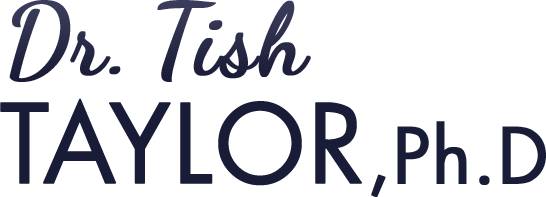
Episode 2: ADHD & Co-Occurring Conditions
In this episode of ADHD Connect, Dr. Tish Taylor explores the complex landscape of co-occurring conditions in individuals diagnosed with ADHD. While ADHD is widely recognized, it’s important to understand that in nearly 80% of cases, ADHD appears alongside another diagnosis—which can complicate treatment, learning, and behavior.
Dr. Tish walks listeners through the most common psychological, behavioral, emotional, and learning conditions that frequently show up with ADHD, and offers guidance on when to seek a differential diagnosis.
In This Episode, You’ll Learn:
✔ What co-occurring conditions mean and why they matter
✔ Common behavioral disorders that appear with ADHD, like Oppositional Defiant Disorder (ODD) and Conduct Disorder
✔ The role of emotional dysregulation, intermittent explosive disorder (IED), and disruptive mood dysregulation disorder (DMDD)
✔ How to identify mood and anxiety disorders such as depression and generalized anxiety
✔ The overlap between autism spectrum disorder and ADHD
✔ How learning disorders (dyslexia, dysgraphia, dyscalculia) frequently show up with ADHD
✔ When it’s time to pursue a comprehensive evaluation
Episode 2 Transcript:
Hello, and welcome to the ADHD Connect podcast. I’m Dr. Tish Taylor, and today we’re talking about ADHD and co-occurring conditions—or what’s often called differential diagnosis.
ADHD frequently appears alongside other psychological, behavioral, or academic conditions. In fact, it’s estimated that only about 20% of individuals diagnosed with ADHD have only that diagnosis. Roughly 80% also meet the criteria for another disorder, as outlined in the Diagnostic and Statistical Manual of Mental Disorders (DSM), published by the American Psychiatric Association.
These overlapping conditions can create confusion for parents, teachers, and even individuals themselves. So today, I want to break it down and offer some clarity—whether you’re trying to understand what you’re seeing in a child, student, or yourself.
Let’s begin with externalizing behaviors, which are fairly common.
ODD includes behaviors like frequent temper outbursts, defiance, noncompliance, irritability, and a tendency to annoy or get annoyed by others. It’s not the cleanest diagnosis—there are a lot of overlapping behaviors—but overall, it reflects a pattern of being easily upset and reacting strongly.
We see this frequently in individuals with ADHD, Combined Type, or Hyperactive/Impulsive Type—up to 50% of the time. It’s less common in the Inattentive Type, but still elevated compared to the general population. Even if a child doesn’t meet full criteria for ODD, you might still see traits of it.
Note: ODD is a childhood diagnosis and not typically used in adult mental health diagnoses.
This is more serious and includes rule-breaking behavior, aggression, or defiance that leads to significant trouble at home, school, or even with the law. It’s less common than ODD but more likely to appear in individuals with ADHD, Combined Type.
While not an official diagnosis, emotional dysregulation is often mentioned when someone has intense emotional reactions that seem disproportionate to the situation. Think: frequent meltdowns or outbursts that last a long time and escalate quickly.
IED might be considered when these emotional explosions are frequent and aggressive—either verbally or physically. It has to be more than occasional frustration—these reactions are extreme and distressing for everyone involved.
Added in the 2013 revision of the DSM, DMDD also involves intense emotional outbursts, but it includes a persistent irritable mood between episodes. Families often describe it as “walking on eggshells,” unsure how their child will wake up or react each day. This chronic irritability, along with frequent tantrums, differentiates DMDD from IED.
Depression, even in milder forms, is more common in individuals with ADHD. It’s important to monitor for signs, especially as children move into adolescence, which naturally brings mood changes.
Anxiety is one of the most common co-occurring conditions with ADHD—seen in about 40% of cases. GAD includes frequent, persistent worry—about the future, the past, making mistakes, or even just everyday tasks. It’s often accompanied by symptoms like difficulty sleeping, tension, or physical complaints like headaches or stomachaches.
There’s a notable overlap between autism and ADHD. Around 40% of individuals diagnosed with autism also meet the criteria for ADHD. However, the reverse isn’t true—ADHD doesn’t carry the same rate of autism diagnoses.
Some traits may look similar between the two—like hyperfocus. In ADHD, hyperfocus is more task-specific and inconsistent. In autism, the focus tends to be more sustained, specific, and intrusive to other areas of functioning. These distinctions can get blurry, and in some cases, a more in-depth evaluation is needed to determine what’s really going on.
Learning differences—like dyslexia, dysgraphia, and dyscalculia—often co-occur with ADHD. About one-third of individuals with a learning disorder also have ADHD, and vice versa.
It’s important to distinguish between the academic challenges that stem from ADHD (like forgetfulness, disorganization, or difficulty focusing in class) and actual learning disorders, which are more about the processing of reading, writing, or math. Written expression challenges are particularly common and can overlap with ADHD, especially when it comes to organizing and communicating thoughts on paper.
ADHD rarely exists in isolation. Whether you’re seeing mood swings, learning struggles, anxiety, or emotional outbursts, it’s possible that more than one condition is at play. That’s why getting a thorough evaluation can be so valuable. It helps to ensure that individuals—children and adults alike—get the support and treatment that addresses the full picture, not just part of it.
If you have questions or want to explore further, feel free to visit my website at TishTaylor.com or email me at drtish@tishtaylor.com.
Thanks for listening to ADHD Connect. Until next time!

